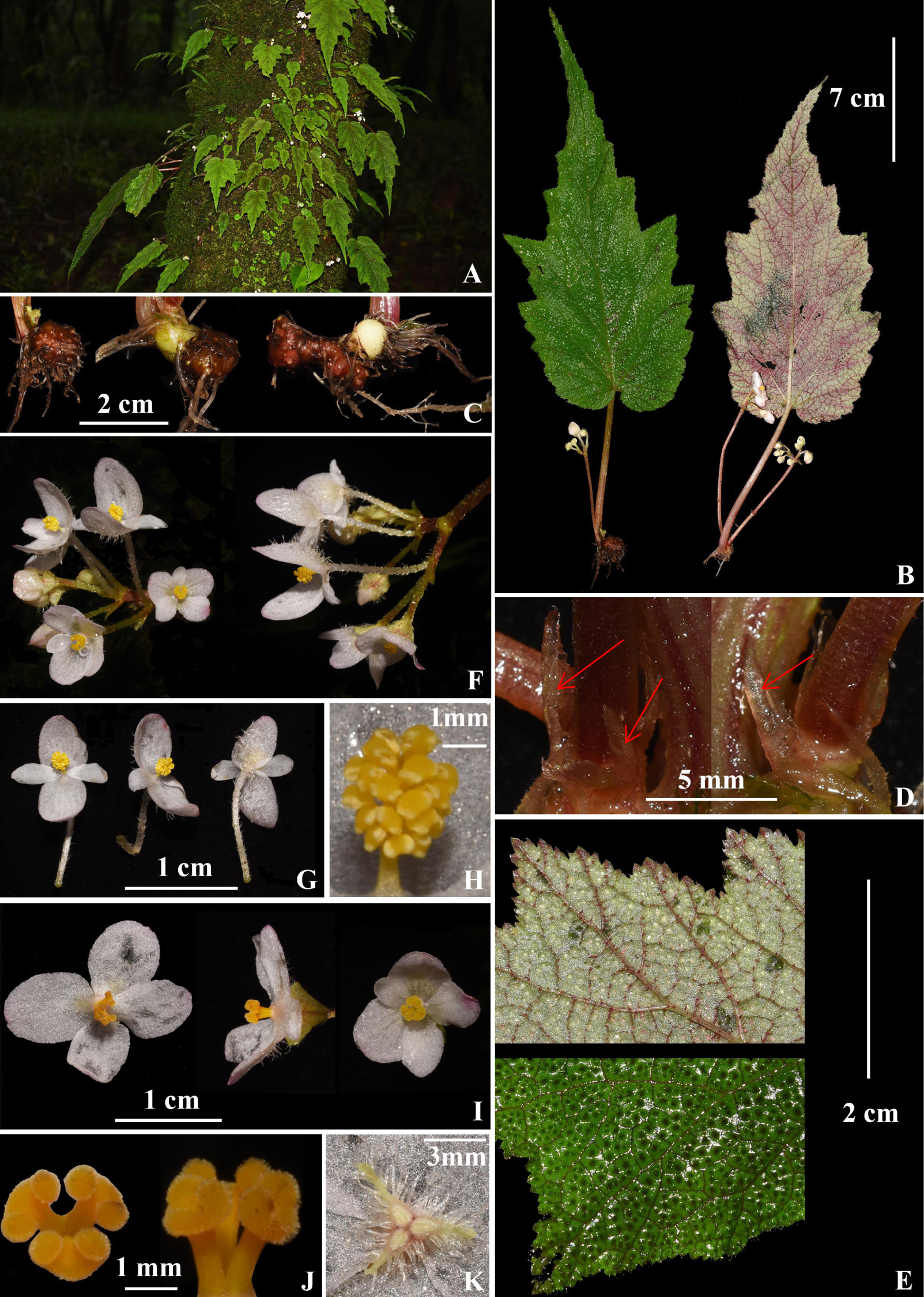In July 2019, during a botanical field investigation in Yingjiang county, Yunnan province of China, researchers from the Wuhan Botanical Garden of the Chinese Academy of Sciences found a peculiar Begonia species, which is epiphytic on trunk and growing in the moss, acaulescent and with globose tuber. It was identified as Begonia hymenophylloides which has been known only in Myanmar. Relevant results were published on Phytotaxa.
In 1926, the species was first collected, it was named by Francis Kingdon-Ward and validly published by Smith and Wasshausen. Only three specimens were collected in 1926 and 1937, respectively. The original literature only described characteristics of B. hymenophylloides in simple Latin, ignoring the characteristics of unisexual flowers, hermaphrodites, stipules and ovary during development.
Based on the new collection, it was morphological supplementarily described and reported as the first record from China. The color photos and illustrations were also provided.
Begonia hymenophylloides is a perennial herb, epiphytic on trees, clustered into a colony, monoecious. Tuber globose, without erect stem. Morphologically, it is similar to B. garrettii Craib (=B. arboreta Y. M. Shui). Both of them are epiphytic on trees, and have globose tuber and simple leaf. However, the former can be easily distinguished from the latter by its smaller leaf adaxially bullate and densely hairy, abaxially hairy (vs. both sides glabrous) along veins, ovary densely villous (vs. glabrous).







